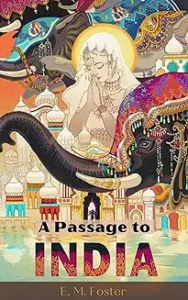A Passage to India by E.M. Forster 1924
Reading ‘Aspects of the Novel’, Forster’s classic critical work several weeks ago, I wanted to read one of his novels whilst (nice touch, heh!) in England. Among his works, “Passage to India’ was the one chosen by Modern Library as well as Time Magazine as one of the 100 great works in English literature in the 20th C and among the 100 all time best novels, respectively. It also was Susan Hill’s choice in ‘Howards End is on the Landing’ for one of the 40 best books she would take to a desert island.
Written in 1934 as WWII was appearing on the horizon and the British Empire was beginning to totter, it’s a powerful and condemnatory view of colonialism, the British imperial mind set, and the anger and frustration of the oppressed peoples who the Brits were ‘saving’.
The book is a rather compelling story of two English women, Mrs. Moore and Miss Quested who travel to Chandrapore, a fictional city in the uplands of India, to visit Mrs. Moore’s son, Ronny Heaslop, the City Magistrate, who is planning to become engaged to Miss Quested. They want to see the ‘real India’, and when Mrs. Moore wanders into a Moslem mosque, we meet Dr. Aziz who confronts her there and ultimately befriends her. The story takes a sinister turn when Miss Quested accuses Dr. Aziz of attacking her while showing the women around the Mirabar Caves. Aziz’s trial and the outcome of the Quested engagement round out the story as does the fraught friendship between Aziz and an Englishman, Cecil Fielding.
Overall, it’s a rather damning indictment of the British colonial rule which demeans and dishonors the natives who themselves are struggling with the rift between Hindus and Moslems. Sexism, imperialism, and racism all come in for their criticism, and Forster manages to keep the story moving along at a rapid pace creating tension all along the way.
Though feeling a bit dated, this was an excellent reminder of Forster’s talent and position in 20th C. English literature.



